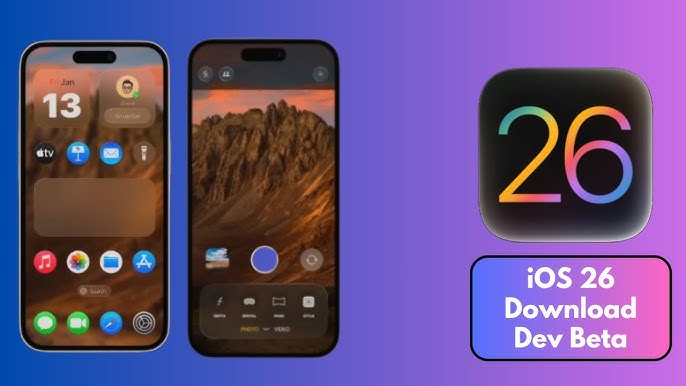The latest iOS 26 beta has tech sleuths buzzing once again. Buried within the code, references strongly suggest that Apple is preparing another one of its core applications to gain satellite connectivity capabilities, significantly expanding the reach of its satellite infrastructure beyond the life-saving Emergency SOS feature introduced in 2022.
Beyond the Emergency Beacon
Apple’s Emergency SOS via satellite, available on iPhone 14 and later models, has proven invaluable in countless situations where users are stranded without cellular or Wi-Fi coverage. It allows users to send emergency messages and share location data directly via satellite. Now, it appears Apple is ready to leverage this unique hardware and network for broader utility.
The Evidence in the Code
Deep within the iOS 26 beta files, developers and researchers (like those at [mention a source like MacRumors, 9to5Mac, or a prominent leaker if known]) have discovered new frameworks and background processes referencing satellite connectivity for an application identifier distinct from the existing Emergency SOS system. While the exact app remains unidentified within the code snippets seen so far, the references clearly point to a non-emergency functionality.
The Prime Suspects: Which App Could It Be?
Speculation is running rampant about which Apple app is next in line for the satellite treatment. Leading contenders include:
-
Find My: This seems like a natural fit. Satellite connectivity could allow users to locate lost devices (like iPhones, AirTags, or future Apple products) even if they are completely offline and out of cellular range, significantly boosting recovery chances. Finding a lost backpack in the wilderness or a device left on a remote beach could become feasible.
-
Maps: Satellite-powered Maps could revolutionize offline navigation. Imagine downloading detailed maps for a remote hiking trip and still getting basic location tracking, route guidance, or even point-of-interest lookup without any traditional signal. This would be a massive boon for adventurers and travelers.
-
Messages: While full iMessage conversations via satellite might be bandwidth-prohibitive currently, a limited “Satellite Text” feature for sending short, crucial messages (like “Delayed, but safe” or “Meet here”) to designated contacts when off-grid is a distinct possibility.
-
Weather: Accessing basic, location-specific weather alerts or forecasts via satellite could be crucial for users in areas prone to sudden storms or without reliable connectivity.

Why This Matters: Expanding Apple’s Satellite Ecosystem
This move signals several key developments:
-
Infrastructure Maturity: It indicates Apple’s satellite network (developed in partnership with Globalstar and others) has matured beyond critical emergencies to potentially support more frequent, albeit likely limited, data transmissions.
-
Broader Utility: Apple aims to make satellite connectivity a more integrated and useful part of the everyday iPhone experience, enhancing core services in low-connectivity scenarios.
-
Competitive Edge: This further differentiates the iPhone, especially Pro models likely to carry the necessary hardware, offering unique functionality unavailable on most competitors.
-
The Future is Off-Grid: It underscores Apple’s commitment to providing services regardless of traditional network availability, aligning with trends in wearables (Apple Watch Ultra) and potential future devices.
Challenges and Limitations
It’s crucial to temper expectations:
-
Hardware Requirement: This new feature will almost certainly require the specific satellite modem hardware found only in iPhone 14 and later models (iPhone 16 series likely being the primary target for iOS 26).
-
Limited Bandwidth: Satellite connections are inherently slower and lower bandwidth than cellular. Any satellite-enabled app feature will likely focus on transmitting small packets of crucial data (location pings, short texts, basic status updates), not streaming video or large file transfers.
-
Potential Costs: While Emergency SOS is free for now, Apple hasn’t clarified the long-term business model for expanded satellite services. Some features might eventually require a subscription (like existing SOS extensions).
The Wait for WWDC Clarity
With Apple’s Worldwide Developers Conference (WWDC) typically held in June, an official announcement regarding iOS 26 and its satellite app expansion could be imminent. The keynote is the most likely venue for Apple to unveil which app is getting the off-grid boost and how it will work.
Conclusion
The discovery within the iOS 26 beta is more than just a leak; it’s a glimpse into Apple’s ambitious roadmap for ubiquitous connectivity. Moving a core app beyond the realm of emergencies represents a significant evolution of their satellite technology, promising to make iPhones even more indispensable tools for users who venture beyond the reach of cell towers. Whether it’s finding a lost device, navigating remote terrain, or sending a vital message, the ability to connect via satellite is poised to become a more integrated part of the Apple experience. All eyes are now on Cupertino for the official reveal.
Read More: Pete Hegseth’s Senate Confirmation Hearing: Key Takeaways and Implications
